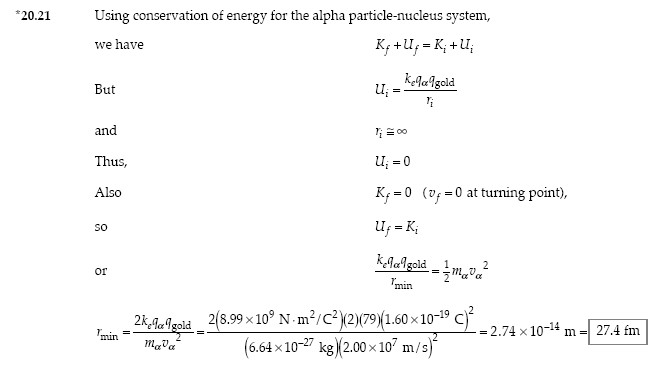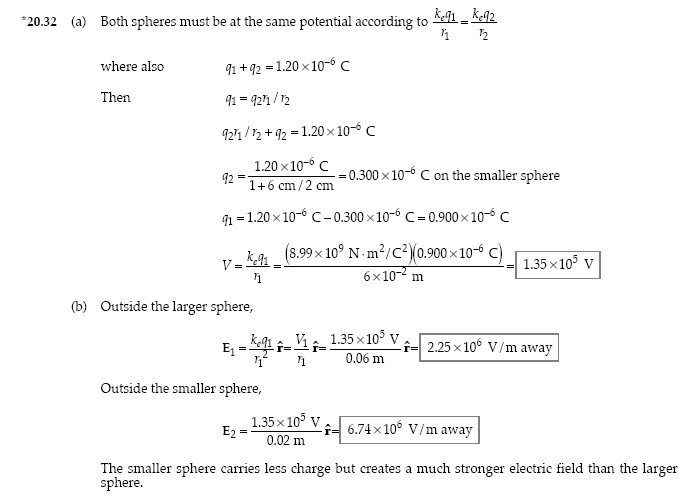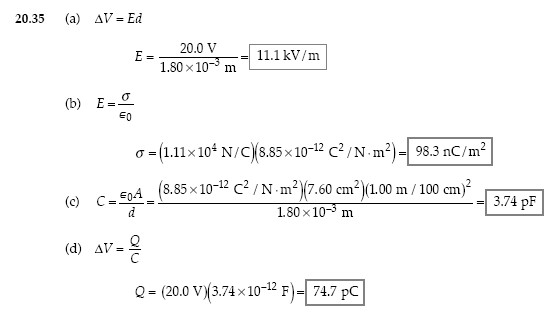Questions
Q20.1 When one object B with electric charge is immersed in the electric field of another charge or charges
A, the system possesses electric potential energy. The energy can be measured by seeing how much
work the field does on the charge B as it moves to a reference location. We choose not to visualize A’s
effect on B as an action-at-a-distance, but as the result of a two-step process: Charge A creates electric
potential throughout the surrounding space. Then the potential acts on B to inject the system with
energy.
Q20.2 To move like charges together from an infinite separation, at which the potential energy of the system
of two charges is zero, requires work to be done on the system, hence energy is stored, and potential
energy is positive. As unlike charges move together from an infinite separation, energy is released, and
the potential energy of the set of charges becomes negative.
Q20.3 If there were a potential difference between two points on the conductor, the free electrons in the
conductor would move until the potential difference disappears.
Q20.4 A sharp point in a charged conductor would imply a large electric field in that region. An electric
discharge could most easily take place at that sharp point.

Problems







